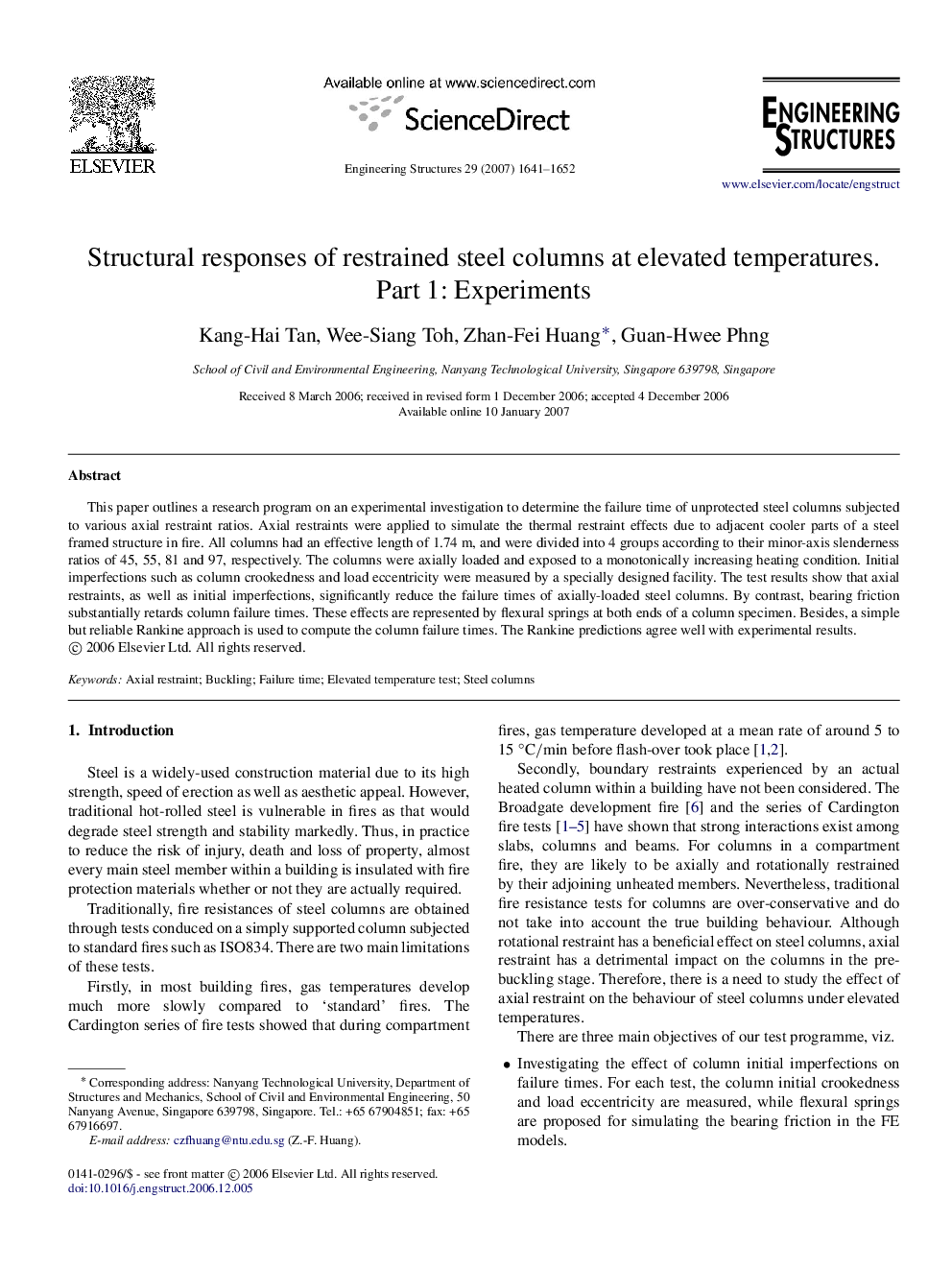| Article ID | Journal | Published Year | Pages | File Type |
|---|---|---|---|---|
| 268902 | Engineering Structures | 2007 | 12 Pages |
This paper outlines a research program on an experimental investigation to determine the failure time of unprotected steel columns subjected to various axial restraint ratios. Axial restraints were applied to simulate the thermal restraint effects due to adjacent cooler parts of a steel framed structure in fire. All columns had an effective length of 1.74 m, and were divided into 4 groups according to their minor-axis slenderness ratios of 45, 55, 81 and 97, respectively. The columns were axially loaded and exposed to a monotonically increasing heating condition. Initial imperfections such as column crookedness and load eccentricity were measured by a specially designed facility. The test results show that axial restraints, as well as initial imperfections, significantly reduce the failure times of axially-loaded steel columns. By contrast, bearing friction substantially retards column failure times. These effects are represented by flexural springs at both ends of a column specimen. Besides, a simple but reliable Rankine approach is used to compute the column failure times. The Rankine predictions agree well with experimental results.
